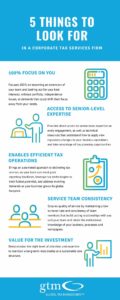An Eye on Tax Talent Post-TCJA
Another Post-TCJA compliance season is behind us and, as expected, corporate tax teams are feeling the effects. While the uncertainty surrounding the changes to the U.S. tax code have begun to pass, the challenge of staying up-to-date on related legislative changes, interpretations, and clarifications remains, and is likely to do so in the coming years.
In and of itself, this isn’t news – or, at its core, even new. But the fact that tax departments are struggling to maintain consistent compliance processes amid new regulatory requirements and accelerated reporting deadlines, while lacking properly implemented technology solutions and struggling to attract and retain talent, has created a perfect storm that could have long-term negative business outcomes. And that’s something we need to pay attention to.
A Big Problem, Getting Bigger
The tax and accounting professions have long been plagued with issues that contribute to a tight job market, like diversity and inclusion (or perceived lack thereof), heavy workloads, poor work-life balance, and reluctance to embrace technology. Add the seasonality of demand and the fact that there’s no defined career path in most colleges and universities, the world of tax talent becomes very small. Unfortunately, this isn’t likely to change in the near future.
These issues are exacerbated following the compliance season, when existing talent shortages are emphasized by average industry turnover. One study finds that turnover in large CPA firms (those with revenues in excess of $75 million) is 17 percent, with one in every six firms reporting an annual turnover of 20 percent or higher. That’s nearly six times the average turnover rate for all U.S. industries as reported by the Bureau of Labor Statistics. While studies haven’t specifically focused on corporate tax departments, we’ve found that, anecdotally, the numbers are similar.
If accounting and tax departments, and the corporations they support, are going to excel – as opposed to staying stuck in a permanent survival mode – this must change, and soon. The Bureau of Labor Statistics predicts that the demand for accountants will rise 10% through 2026, faster than the average growth rate for all other occupations, and there already aren’t enough qualified accountants to fill them.
In an environment where experienced talent is reaching retirement age and colleges and universities already aren’t filling the pipeline, adding even one qualified person to a corporate tax department can be a challenge; according to the most recent Tax Hiring Outlook, an increase of 60% of companies thought it would be difficult to very difficult to hire in 2019.
Under these conditions, building a complete tax department that’s sustainable through personnel changes and seasonable uptick is even more challenging, and presents a high degree of risk that many organizations aren’t willing or able to incur.
Identifying Top Tax Department Challenges
According to Bloomberg Tax, keeping up with legislative changes remains a top problem for corporate tax departments, with the burden of compliance running a close second. Nearly two-thirds feel that their company is currently more exposed to tax-related risks than it was five years ago. Technology issues are also keeping them up at night. While implementing new technology or improving the effective use of existing systems is a top challenge for large tax departments, it’s the lack of effective technology and automation that’s a problem for tax departments when it comes to the core processes of income tax accounting and tax provision. Specifically, according to Bloomberg Tax, tax departments report the following:
- 80% say that keeping up with reporting and control requirements is becoming more difficult
- 74% believe that their company will face more aggressive tax enforcement from taxing authorities
- 63% feel that their company is currently more exposed to tax-related risk than it was five years ago
- 57% say that keeping up with changes as a result of tax reform along with legislative tracking is one of the biggest challenges their tax department will face in the coming year
- 53% of large tax departments consider technology a top challenge
- 41% claim that limited resources and/or a low budget is among their biggest challenges in the coming year
Without qualified talent, these challenges are difficult to overcome.
GTM’s experience with corporate tax departments reflects these findings. Our conversations with our clients frequently reveal that tax personnel are too busy to keep up with tax reform changes; they’re unfamiliar with optimization techniques; they’re working with technology that hasn’t been properly implemented; they’re burdened by manual and labor-intensive processes; and, as a result, their data isn’t accurate, granular or timely. Yet due to accelerated deadlines and resource constraints, they lack the capacity to fill these gaps themselves.
Empowering Existing Talent through Co-Sourcing
As corporate tax departments adjust to a further complex environment, their roles are changing. Instead of being transactional entities, they – and the talent that fuels them – are emerging as a strategic business partner that contributes to overall company growth. This requires increased capacity and agility for better decision-making, improved analytics and insight, mitigated risks and established controls. All of this depends on the performance of an agile and skilled tax workforce, which is impossible to maintain if you’re trapped in an endless cycle of recruit-onboard-churn repeat. The complexity of today’s tax rules makes it difficult for even larger organizations to rely exclusively on internal tax resources and expertise.
At GTM, we have consistently found that the key to attracting and retaining top tax performers is to give them additional structure and support, particularly during periods that are traditionally busy. This kind of ‘co-sourcing’ arrangement provides tax department with additional resources during compliance and other busy periods – including during the on-boarding and ramp-up periods for new employees – to improve processes and controls and meet deadlines while still enabling them to hone their own professional skills and maintain a manageable work/life balance. Tax functions that can be co-sourced include:
- Provision
- Compliance
- Software implementation/enhancement/administration
- Process optimization and process management
- Seasonal/just-in-time resources
The right co-sourcing arrangement provides more than just borrowed staff to meet regulatory deadlines or other tax requirements. Co-sourced teams should become part of the tax function, working side-by-side with internal tax teams and forming long-term business relationships that enable tax departments to function as true strategic partners to the organization – all while providing the support that existing, in-house talent needs to flourish, and that the broader organization needs to thrive.



